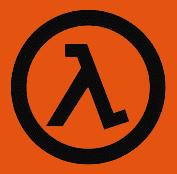Well folks, the ARM-powered Chromebook built by Samsung can finally be bought in the Netherlands, and this raises a hairy question. Should I buy one and have a real-life target for my ARM port of Slackware which has been on the backburner for a year?
As you may remember, I started an ARM port of Slackware which is different from SlackwareARM.The design goals I have set for my own port are:
- it should have SlackBuild scripts which are compatible with official Slackware – i.e. Pat Volkerding should be able to just grab an unaltered script for the ARM port and build a 64-bit Slackware package with it
- it should target modern ARM architectures. SlackwareARM targets older generations of ARM CPU’s – notably without hardware floating point support. I want to create a port which can be used on “powerful” ARM tablets, and laptops.
- it should be a port from scratch and the process should be documented
I bought a TrimSlice ARM computer late 2011 but unfortunately that hardware did not live up to the promise.It is a nice developer box (meaning it builds packages faster than other ARM computers) but it has not become a consumer product.
I have been thinking about buying a tablet as my new target for the ARM port, but there are no interesting hardware choices really which warrant the effort I have to spend on making Slackware work really well on a touch device. There are some tablets which are catering for Open Source OS-es, like The ZaTab, but it is relatively expensive, not too powerful and this too, never became a viable consumer product. The Vivaldi tablet created by KDE developers is still awaiting its birth and I have no idea if this tablet will be more than a gimmick or even vaporware.
And here is that ARM powered ChromeBook! With 7 hours of battery life, no moving parts, fan-less design, a real keyboard and an exceptional screen (I have held one in my hands) it does not come with any local storage of interest… because it runs ChromeOS on a 16 GB SD card, and you are supposed to store and access all your stuff online in a Google Drive. But, if this laptop would run Slackware, you could add a larger SD card, or plug in a USB hard drive and have a very interesting laptop indeed!
Well, here is the catch. I do not have the funds to buy this laptop. Financially it is looking a bit bland here at the moment. There is some donation money coming in every month, but that is a trickle and does not even pay the electricity bill for the server (which is OK since this is not my job, it is my hobby after all).And this laptop has been eyeing at me from its Google web page, and I seriously like it, and like to have one. I know that Stuart Winter (creator of SlackwareARM) bought one for himself and is working on a SlackwareARM boot.
I decided that there is only one way in which I can revive my own ARM port, and build a hard-float ARM image of Slackware with KDE for that ChromeBook. And that is to ask you people for support.
Note that I already received those 300 euros I needed to purchase the ChromeBook… in fact I received three times as much! As explained on the ARM Port page, the additional money will go into the purchase of additional hardware after I finish the ARM port, or earlier if I need more ARM computers to speed up the compiling process.
Yes, a “donate” button. What I propose is that I try to collect the 299 euros in donation money that it will cost to buy the ARM ChromeBook in the Netherlands. The “donate” button above will lead to a PayPal page where you can contribute an amount of money that you can spare. I will create a blog page http://alien.slackbook.org/blog/armport on which I will keep track of the progress and will mention everyone who made a donation to this cause. If you do not want your name listed, you can tell me so on the donation page.
In return for the donation money, assuming I am able to collect these 299 euros:
- I will resume my ARM hard-float porting effort (yes, this may affect the update frequency of other packages I maintain).
- That porting effort will not be “behind the curtains” like it has been so far. I will upload packages and scripts and will welcome ideas and feedback
- The Chromebook will be the target hardware to build a bootable Slackware image.
- I will upload the from-scratch cross-compiler and minirootfs which I created already, to start with
- I am going to document on docs.slackware.com about porting to a new architecture from scratch.
- I will also tickle Pat Volkerding’s interest in the ARM port.
I do think that this ARM ChromeBook might be a real viable consumer product worth buying by more than just developers and geeks, and if Slackware runs on it that would be awesome!
What do you think? Am I crazy to ask you for support money? And what if I do get money, but more than 300 euros? Should I try to buy another ARM product (like, a tablet) or return the surplus money? If I fail to collect those 300 euros, people will get their donations back in any case. Feel free to spread the link to this page so it gains some more attraction.
Eric



Recent comments